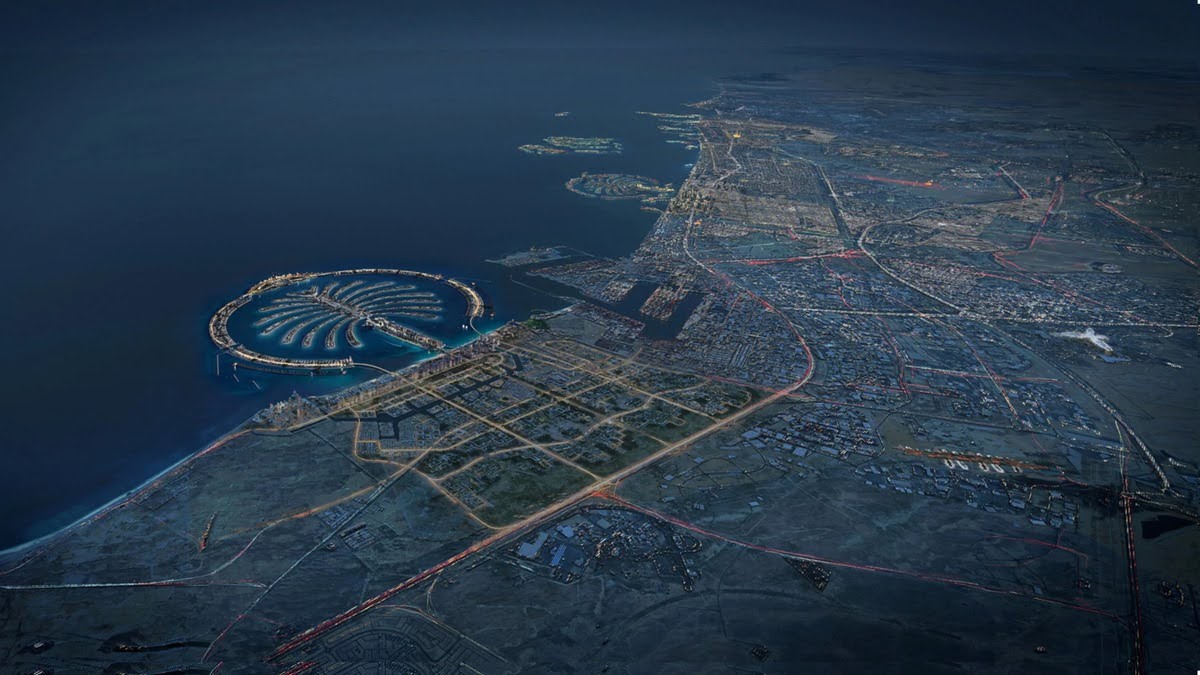
Making Palm Jebel Ali: Largest Man-Made Island in the Middle East
Palm Jebel Ali, a visionary project under the Dubai 2040 Urban Master Plan, is set to become the world's largest man-made island. Developed by Nakheel, this artificial archipelago is 50% larger than Palm Jumeirah in area, featuring a landmark design with a vast palm tree and an encompassing crescent. Construction, which began in 2001, experienced a halt due to financial challenges but has now resumed towards a mid-2020s completion. Poised as a significant residential, commercial, and leisure hub, Palm Jebel Ali is not just an architectural feat but a strategic endeavor promising substantial economic returns for Dubai.
The Vision behind Creating the Palm Islands of Dubai
Palm Jebel Ali, developed by Nakheel Properties, forms a key part of Dubai's strategy to enhance its coastline and tourism capacity. As one of the three Palm Islands, including Palm Jumeirah and Deira Islands, its construction began in 2001 and contributed significantly to the surrounding ocean environment. Covering 13.4 square kilometers, this project aims to add 56 km to Dubai's coastline, supporting the goal of tripling annual tourist numbers to 15 million.
Palm Jebel Ali is set to become a self-sufficient city, featuring over 80 hotels, shopping centers, restaurants, and residences, catering to approximately 35,000 families. This development underlines Dubai's commitment to becoming a prime global destination for lifestyle and business.
How Was Palm Jebel Ali Built?
Construction of Palm Jebel Ali, a pivotal part of Nakheel's waterfront vision, reflects a blend of ambition and meticulous planning. With a significant boost in November 2022, Nakheel secured AED 17 billion ($4.6 billion) to expedite its projects, including Palm Jebel Ali. Built akin to Palm Jumeirah, using natural materials like sand and rocks, the construction avoided concrete and steel, adhering to Dubai's ruler's directive.

Over 5.6 million cubic meters of rock from local quarries, 94 million cubic meters of sand from deep sea beds, and 700 tons of limestone have been used. Long-reach excavators were instrumental in achieving this. The reclamation, largely completed by 2006, involved extensive dredging and material movement. Belgium's Jan de Nul handled the initial phase, while South Korean firm Samsung C+T contributed to infrastructure, including a $350 million bridge construction project. Although progress was temporarily halted, the resumed work is now steering towards the island's completion, aligning with Dubai's grand D33 vision for its waterfront development.
Mitigating Potential Risks
In constructing Palm Jebel Ali, Nakheel addressed significant environmental and structural challenges with innovative solutions. To counteract potential sinking, wave impacts, and storm threats, extensive breakwaters, stretching 160 km in length and 3 meters high, were installed. These structures, monitored by deep-sea divers and GPS, ensure stability and alignment of the superstructure.

Erosion and marine ecology damage were significant concerns. Maintenance systems spray materials along Dubai's coast and the island to prevent erosion. The design of the breakwaters, allowing seawater flow, and the use of rain-bowing techniques for sand placement, play a crucial role in environmental balance. Regular underwater checks by divers every six weeks help monitor marine life, contributing to ecological recovery.

Additionally, to counter the risk of soil liquefaction, a vibro-compaction technique was employed, ensuring a solid foundation for the island. These measures not only mitigate risks but also contribute to the island's sustainable and environmentally responsible development.
The Economic Significance of Palm Jebel Ali
Palm Jebel Ali's inception is a major boost to Dubai's economy, poised to reshape the real estate market significantly. The project has garnered interest from both local and international buyers, driving up demand and property values. With villas as large as 8,000 square feet selling for around Dh20 million ($5.4 million), and larger 12,000 square-foot villas reaching up to Dh35 million, the market shows robust growth. Additionally, plots are attracting prices between Dh25 million and Dh30 million. Beyond real estate, the project is set to create thousands of jobs, attracting investments and reinforcing Dubai's stature as a global business and leisure destination. The broader economic impact of Palm Jebel Ali extends internationally, enhancing Dubai's allure to tourists and investors alike. With the first handover expected in 2027, the project is already shaping Dubai's future economic landscape.

As Palm Jebel Ali takes shape, it not only signifies Dubai's innovative spirit but also marks a strategic shift in the city's urban dynamics. Mirroring the high-end allure of areas like South Beach Miami, Palm Jebel Ali is poised to become Dubai's 'south', a zone synonymous with luxury and exclusivity. This positioning aligns with Dubai Metro's expansion, enhancing the area's connectivity and appeal as a new downtown. Its proximity to the future world's largest airport, Al Maktoum International, further cements its role in Dubai’s evolving logistics and trade landscape. Subscribe to our newsletter for more insights into such groundbreaking projects and the latest in construction and heavy equipment innovations.